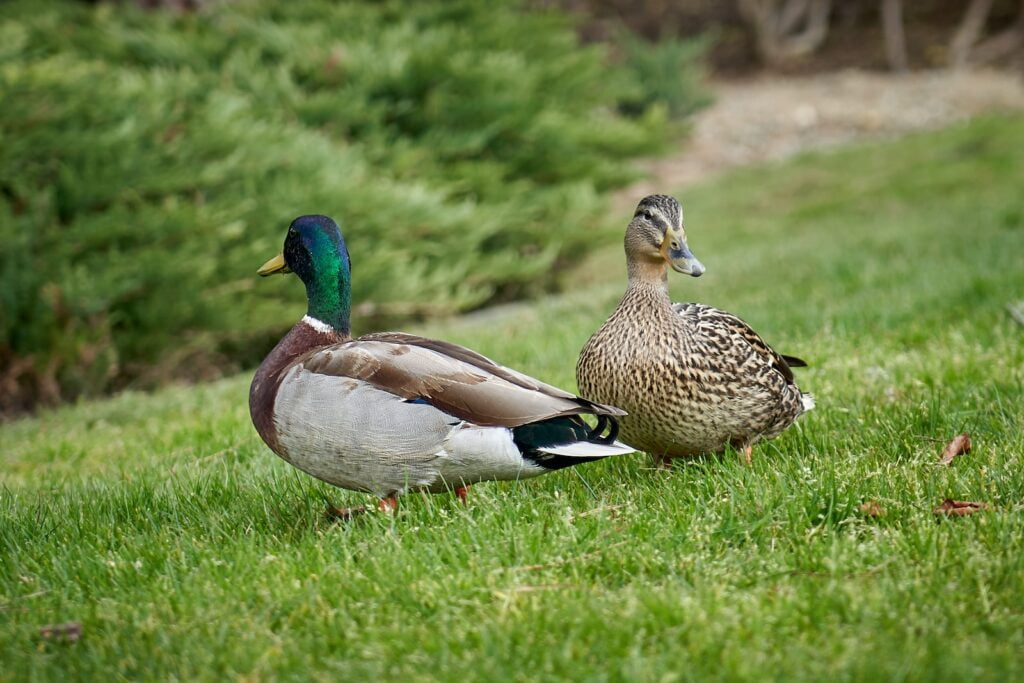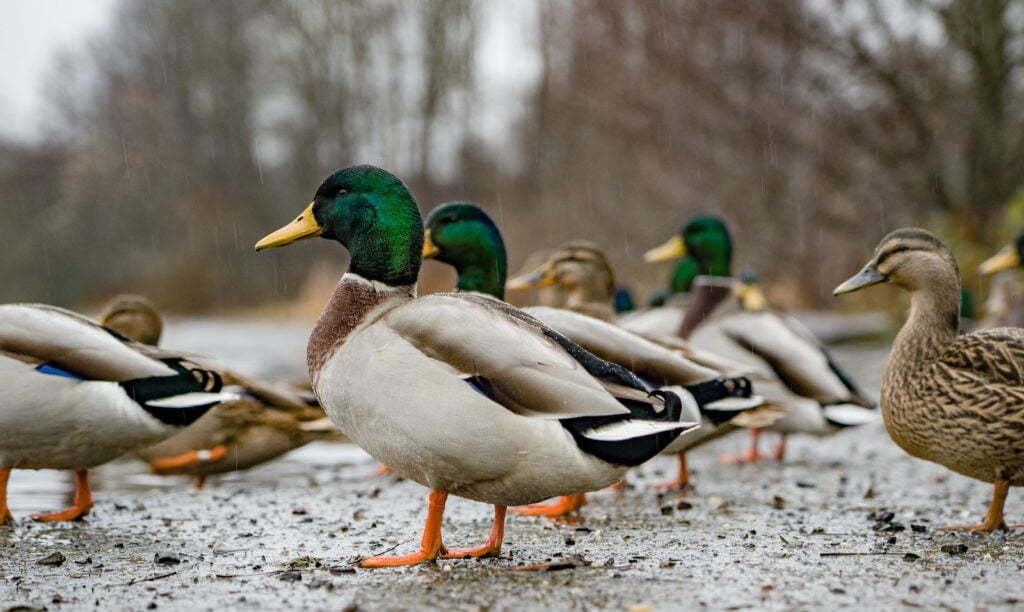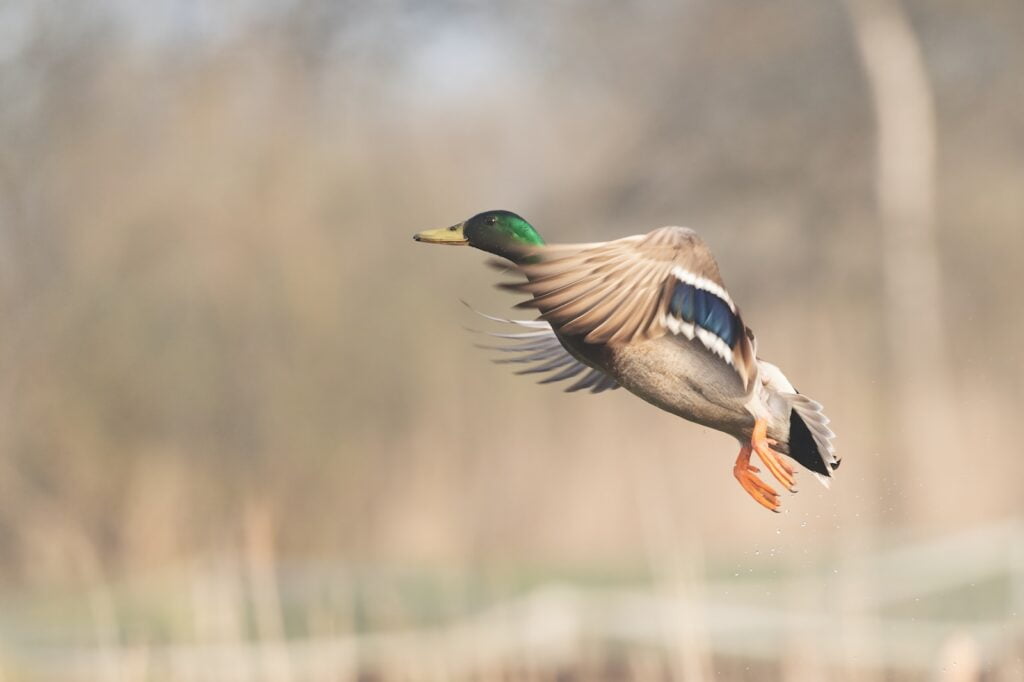50 Fascinating Facts About Ducks

Ducks are a common sight in wetlands, lakes, ponds, and parks worldwide. But beyond their familiar quacking and waddling gaits, ducks have many amazing abilities and traits that enable their aquatic lifestyle.
In this article, we’ll highlight 50 intriguing facts about duck anatomy, behavior, habitat, conservation, and more. Read on to uncover some fascinating qualities of these remarkable waterfowl that you may not have known.
Physical Traits

- Ducks are small to medium-sized waterfowl with flat bills, short necks, and webbed feet ideal for swimming.
- They have a waterproof coat of feathers with a soft downy underlayer for insulation and warmth.
- Male ducks (drakes) often have colorful plumage compared to drab-toned females (hens).
- Excellent eyesight allows ducks to see clearly underwater and scan for predators. Their eyes are set wide for a panoramic field of vision spanning 340 degrees.
- Preen glands near the tail secrete oil that ducks spread on their feathers to maintain water resistance and keep plumage flexible and clean.
- Oddly shaped bills with comb-like structures called lamellae allow ducks to filter and strain food from water.
Habitat and Migration
- Ducks thrive in diverse wetland environments including marshes, rivers, ponds, and lakes. They’ve also adapted to live in urban areas.
- Species span the globe, found on every continent except Antarctica.
- Many ducks migrate long distances along established flyways to find optimal breeding and feeding grounds as seasons change.
- In flight, ducks form V-shaped flocks during migration to take advantage of wind currents produced by birds ahead. This conserves energy.
Feeding and Diet

- As opportunistic omnivores, ducks eat a varied diet including grains, seeds, aquatic plants, insects, worms, fish, and more.
- They use a unique “dabbling” feeding method, tipping upside down to submerge their heads underwater and filter edible bits from the mud with their specialized bills.
- Some diving duck species plunge underwater to catch fish and aquatic invertebrates at depths exceeding 60 feet.
Life Cycle and Reproduction
- Ducks form monogamous pair bonds during breeding season and males protect females and nest sites from predators.
- Females build nests on the ground near water, crafting them from available grasses, leaves, and feathers.
- Depending on the species, ducks lay between 8-15 eggs that incubate for 25-32 days before hatching.
- Ducklings have to slow down and can walk, swim, and find their food soon after hatching. Duck mothers lead new ducklings to water.
Communication and Behavior
- Ducks make various calls including quacks, whistles, grunts, and growls for different purposes like alarms, greetings, and courtship.
- Body language such as head bobbing, wing flapping, and tail wagging conveys messages between ducks.
- Highly social animals, ducks gather in large flocks for feeding, nesting, and migrating for added safety and protection.
- Preening feathers with their bills distributes waterproofing oils, removes parasites, and realigns barbs for a healthy, maintained coat.
- Playful duck behaviors include splashing, chasing, and diving underwater.
Notable Duck Species

- The Mallard is the most abundant duck species found throughout North America.
- Weighing just 2 grams, the Bumblebee Hummingbird is the world’s smallest duck species.
- The hefty Muscovy Duck is the largest, weighing up to 15 pounds.
- With flight speeds topping 70 mph, the Canvasback is recognized as the world’s fastest duck.
- The Common Eider can dive underwater over 200 feet making it the deepest diving duck.
- Domesticated for thousands of years, ducks are farmed for their flavorful meat, eggs, and down feathers used in insulation and bedding.
Threats and Conservation

- As wetlands are developed, ducks lose vital habitat. Pollution and hunting also threaten some duck populations.
- Conservationists work to protect key breeding areas. Limits on hunting, along with habitat restoration, have helped recover many species.
- Adaptable ducks like the Mallard and Wood Duck thrive in urban areas, as seen in city ponds and parks.
Fun Duck Facts

- The phrase “like water off a duck’s back” comes from how water rolls off their oily, waterproof feathers.
- “Sitting duck” refers to ducks that sit still on the water, appearing vulnerable and easy targets.
- The iconic bathtub toy, the rubber duck, first appeared in the 1800s and is now a childhood bath-time tradition.
- Ducks are featured in children’s books and cartoons including Donald Duck and Daffy Duck.
More Cool Duck Traits
- Many ducks migrate incredibly long distances up to 6000 miles between breeding and wintering grounds.
- Ducks molt all their flight feathers simultaneously once a year, leaving them flightless for several weeks.
- Certain ducks can dive to great depths, with the Long-tailed Duck reaching 200 feet underwater.
- Male ducks perform elaborate courtship displays using flashy plumage and movements to attract mates.
- Duck eggs are pointed at one end and oval-shaped, causing them to roll in tight circles rather than away if disturbed.
- Day-old ducklings can leap from their high tree nests, landing safely on the forest floor below.
- Ducks spread preen oil over their feathers using their serrated bills like tiny combs.
- Developing ducklings acquire lifesaving buoyancy and waterproofing in just a few days before hatching.
- Ducks have rapidly adapting circulatory systems enabling them to thrive in frigid waters.
- Powerful chest muscles account for up to 20% of a duck’s body weight to provide strength for flying.
- Duck feet have no nerves or blood vessels allowing them to swim in icy water without discomfort.
- Ducks have impressive navigational abilities using the Earth’s magnetic fields, stars, and visual landmarks.
- Male ducks lose their loud quack during summer molting, returning in the fall to attract mates.
- Ducklings begin practicing adult calls weeks before they are able to vocalize any sound.
- Ducks spread their webbed toe tips to use their feet as brakes for quick stops and smooth landings.
Conclusion
With amazing physical adaptations, navigation skills, reproductive behaviors, and more, ducks are fascinating birds specialized for an aquatic environment. Their unique bills, waterproofing, courtship dances, and migratory endurance are just a few of the many incredible qualities that make ducks thrive across diverse wetland habitats.
The next time you see ducks paddling across a pond or waddling through a park, take a moment to appreciate the superb natural abilities of these common yet remarkable waterfowl. Watching ducks in their natural settings reveals there is still much more we can learn about their impressive evolutionary adaptations and behaviors.






